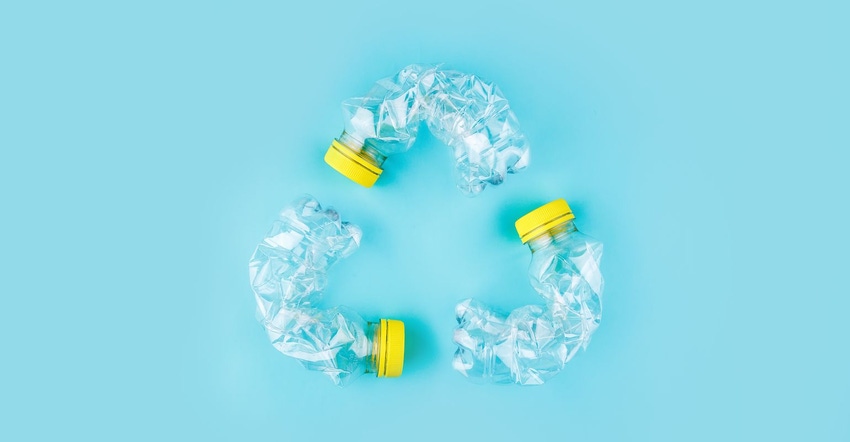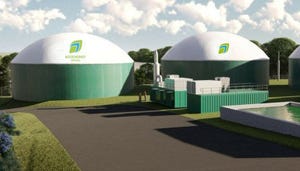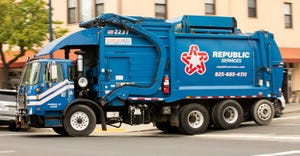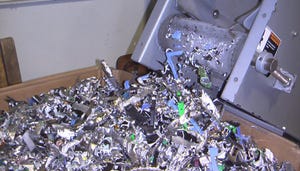Plastics Packaging Recyclers Attribute Low Recycling Rates to Lacking Collections
About 81% of the most widely used consumer-facing packaging is made of polyethylene terephthalate (PET), high-density polyethylene (HDPE), and/or polypropylene (PP), which collectively have a 21% recycling rate in the U.S. But recyclers have capacity to process up to 42% of these three resins with their existing infrastructure, according to the Association of Plastic Recyclers (APR). This was among takeaways from APR’s most recent report on postconsumer plastic recycling, which looked at recovery and recycling rates in 2020.

About 81% of the most widely used consumer-facing packaging is made of polyethylene terephthalate (PET), high-density polyethylene (HDPE), and/or polypropylene (PP), which collectively have a 21% recycling rate in the U.S. But recyclers have capacity to process up to 42% of these three resins with their existing infrastructure, according to the Association of Plastic Recyclers (APR).
This was among takeaways from APR’s most recent report on postconsumer plastic recycling, which looked at recovery and recycling rates in 2020. The data came from 9,000 community recycling programs that collect plastics from households, and from 100-plus postconsumer recyclers.
“There isn’t enough raw material being made available to recyclers. So, if we want to increase recycling rates, at a minimum every one of those 9,000 recycling programs must include the packaging that consumers use and touch every day [that incorporate] PET, HDPE, and PP containers,” he says.
The trade association seems confident that the roughly 32 North American PET processors and 13 PP processors it knows of (no numbers were available for HDPE) can reach that target.
But getting there will require seeing that the material makes it into residential bins then gets sorted properly at materials recovery facilities (MRFs), APR concludes.
Meanwhile, no one plant recycles all three of these resins, as each one is of a different makeup. So, if and when they’re picked up, they have to move on to separate facilities, likely not easily orchestrated as packaging from one carry out order may incorporate each of these plastic types, among others. (Though by some industry accounts, even if collections improved, food packaging presents another challenge: commercial technologies for this application have limitations.)
Collection infrastructure is lacking for resins beyond PET, HDPE, and PP that are also commonly used in consumer packaging, such as film and flexibles [low-density polyethylene (LDPE)] and polystyrene (PS). Here are some of the challenges, by resin type:
Film cannot go through a curbside collection program; rather it has to go to designated drop-off locations where such sites exist, then be transported to specialty recyclers. Otherwise, if it winds up in MRFs it wraps itself around equipment; plants have had to shut down to separate it.
The industry has not yet been successful at establishing a separate collection program for film to get it to recyclers who work with it, Alexander says.
Likewise, PS can’t go in curbside bins. Most communities don’t take it even at drop offs, and those who do only accept clean material (free from food and drink residue, as is the case with other food-grade resins). And because it’s bulky but light weight as it’s filled with air, very little by weight can be loaded on a truck.
“We have recyclers that recycle polystyrene, but they aren’t getting substantive amounts of material. We are working on densification technologies [that compact PS] to make recovery and recycling more economically feasible to include in programs,” Alexander says.
The study finds growing potential for boosting recovery of film, the only PCR that showed increased recovery rates—another 8 million pounds. Currently there are about five processors in the U.S. who can work with this postconsumer material at fairly sizable scale.
The “big picture” from APR’s study:
All total, 4.8 billion pounds of postconsumer plastic were recovered for recycling in 2020, representing a 5.7% decline from 2019 and small uptick from 2018.
The categories represented are bottles (by resin), non-bottle rigids, film, and other plastics (excluding PS).
Bottles comprised the majority of the postconsumer plastic recovered at 57.1%, with PET bottles making up the greatest share.
The only increase was in recovery of films (.8%).
The largest decrease was in non-bottle rigids (16.3%).
The least-recovered of specified materials was PP and “other bottles.”
A further breakdown of APR’s numbers:
Film: 985.6 million pounds recovered, 82.2% of which was acquired by North American reclaimers.
PET bottles: 1,767.7 million pounds recovered, 96.5% of which was acquired by North American reclaimers.
HDPE bottles: 943.2 million pounds recovered, 97.9% of which was acquired by North American reclaimers.
PP bottles: 29.7 million pounds recovered, with a recycling rate of 15.4%.
Non-bottle PP combined with HDPE non-bottle: a little over 400 million pounds recovered and acquired by North American reclaimers for recycling.
PS: 3.3% recovered for recycling and acquired by North American reclaimers.
APR estimated reclamation capacity for postconsumer non-bottle rigid plastic is 1.2 billion pounds, mainly for clean, segregated PE and PP items (end users are for automotive, pallets, construction items, etc).
Outcomes of studies that aim to tell the fate of end-of-life plastics vary, which it seems depend on targeted metrics (recovery rates vs. recycling rates, postconsumer vs. postindustrial, resin type vs. all plastics, etc.) as well as methodology (how and where the numbers are captured).
For instance, a study of the Department of Energy’s National Renewable Energy Laboratory (DOE/NREL) estimated an overall recycling rate of all municipal plastic waste of 5% in 2019, which is in line with a recent study by environmental nonprofit Beyond Plastics, a nationwide environmental project, and The Last Beach Cleanup.
The DOE/NREL report broke down numbers by several resins also examined in the APR study. But note that some of APR’s numbers look at these particular resin types in bottles, while DOE/NREL figures (BELOW) look more broadly at resin type, without isolating the application it’s used in.
Some of DOE’s findings:
PET: 76% landfilled, 9% combusted, 15% recycled.
HDPE: 82% landfilled, 9% combusted, 10% recycled.
PP 88% landfilled, 9% combusted, 3% recycled.
LDPE/LLDPE: 88% landfilled, 10% combusted, 2% recycled.
PS/EPS: 91% landfilled, 9% combusted, 1% recycled.
Still demand for recycled resins grows as consumers push for it and some brands respond. Going back to APR’s report, it concludes that meeting that demand, specifically for consumer packaging, will require three steps:
1)Companies to manufacture plastic products and packaging that are compatible with recycling; (2) consumers to put recyclable material in the bin; and (3) a robust recycling infrastructure to collect, sort, and process that material
About the Author(s)
You May Also Like




